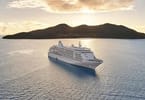Clearly, hydrogen is a challenge. It is not an energy carrier that we use today in aviation. We have many things on our side. For example, gas turbines have already flown with hydrogen. In the 1950s, the US Air Force has flown with hydrogen on a B-57 aircraft. In the 1980s, a Tupolev 155 was flown with the gas turbine cooperating on hydrogen. The technical feasibility is demonstrated at a certain level. What we now need to do is make that technology compatible with real commercial aviation applications. Fuel cell technology exists, but we want to get higher performance levels out of it. Liquid hydrogen storage technology, again, exists. The automotive industry has actually developed it, but at the same time, we want to improve it and bring it to commercial aviation standards.
Infrastructure is another element which, clearly, we need to change dramatically. At the same time, what we will see as a step-by-step approach to introduction of hydrogen aircraft. And what we have been looking at in terms of modeling is how there are a huge amount of flights which can be operated, in fact, with relatively small number of airports equipped, and we’re looking at taking advantage of that kind of effect in our planning for the introduction of this aircraft. And I already spoke about availability and cost and how, for sure, the ecosystem needs to change compared to where it is today in order for us to be successful in aviation.
Some of the technology that we’re talking about on the aircraft, and I just chose this aircraft as an example. We have hydrogen-powered gas turbines, liquid hydrogen storage at the rear, and you can see how the shape of the aircraft changes because we need to store hydrogen which has more volume than kerosene. There are several options for where to store hydrogen, and this image reflects one of the options that we’re looking at. We have fuel cells at megawatt scale which are used to provide electric power into the gas turbines in a hybrid configuration, but can also be used to provide full electric power in the type of concept that I showed earlier, the fuel cell power concept and then power electronics and electric motors to convert the electrical energy into shaft power.
Architecture of a hybrid, propulsion system looks something like this. We have a liquid hydrogen storage, and essentially, you’re feeding hydrogen in two pathways, one towards your electrical propulsion system and two, towards your gas turbine where the hydrogen is combusted. And the combination of the two in a hybrid electric configuration allows for a very high performing propulsion system.
I mentioned that we have the option to… or we’re looking at the option to have a fully fuel cell powered aircraft. That’s one of the images I showed earlier. And the only change in terms of architecture would be, essentially, to remove the gas turbine and the pathway of liquid hydrogen towards the gas turbine.
I’ve already hinted that this challenge is a challenge which involves other sectors like ground transportation and highlighting that, I guess, is the joint venture which we’ve established with ElringKlinger who [is] an automotive player. We’ve set up a company called ArrOW Stack GmbH in Stuttgart in Germany, where we’re planning on taking the fuel cell stack from an automotive application and increasing the performance level so that it’s appropriate for aerospace applications. And like I said earlier, that technology will eventually find its way back into the automotive and energy sector, and that’s really interesting from a societal perspective.
Our overall timeline is summarized here where we have an entry into service targeted by 2035. We plan to select the final product in around 2024-2025 timeframe. In the same period, we want to achieve Technology Readiness Level 5 and 6 for the different systems. That means flight testing many of those systems. If we work backwards, we then have a Technology Readiness Level 3 in around 2022. And at that same point in time, we want to select which propulsion system we move forward with at architecture level.
We had the pre-program launch in 2020 which coincided with the communication we did, and inside Airbus, the project started in, let’s say, officially in 2018. The infrastructure and ecosystem piece [are] as important as the technology development in getting us to 2025 when we hope to be able to have a program launch, a product launch. And we have teams working on this with airports, with energy providers in order to plan and de-risk that stream which is obviously vital for the success of ZEROe aircraft.
Hopefully, very quickly, that’s given you an overview of ZEROe, of Airbus’s ambition to bring a zero-emission aircraft to service by 2035. We will need help to do this. I hope we can count on your support to make this happen, and we are looking forward to working with you on this adventure.
#ដំណើរកសាងឡើងវិញ






















